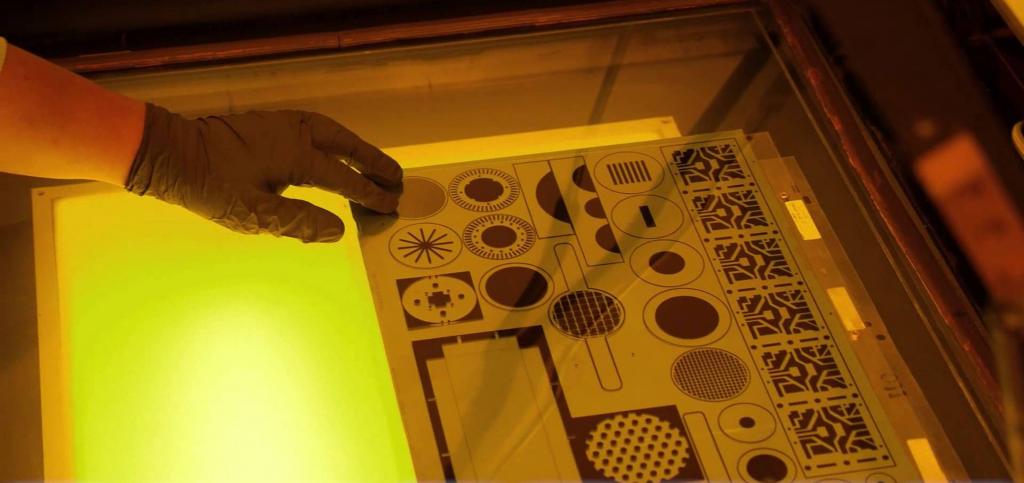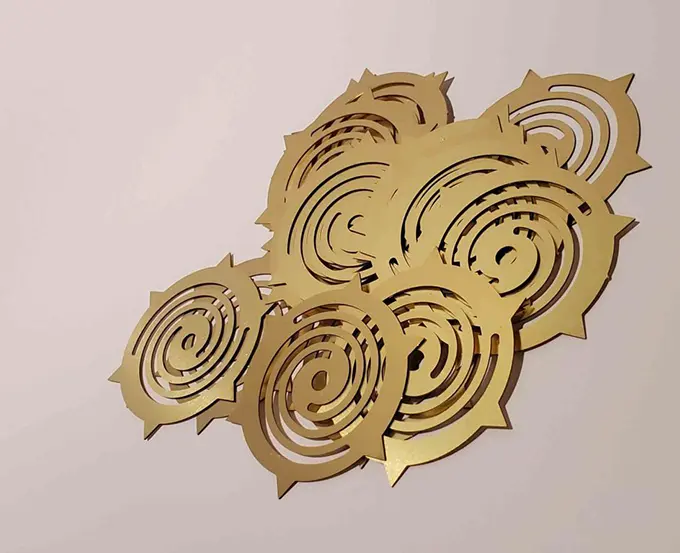The photochemical etching, often known as chemical etching, is the latest metal designing model using chemistry and photo-etch technologies. In this Photo etching refers to one of the adopted and preferred methods for producing thin metal fabricated parts with intricate or simple designs. The process of photo etching is otherwise called photochemical etching (PEC) or chemical etching. It can produce complex parts with a tolerance of around 0.1 mm. That would be unachievable with other methods like stamping, laser cutting, wire EDM, waterjet cutting, or electroforming. While talking about the process of photo etching, here we will answer how to photo-etch metal. So, let’s proceed without any delay.

Process of Photo Etching on Metal
How to photo-etch metal? It is a common question that moves around on a lot of technology platforms. Typically, photo etching of metal is a multi-step process that uses photo-sensitive material to shift the part images or patterns onto the metal sheet (desired metal). During the process, the unwanted sections are dissolved by the chemical etchant, leaving the desired part dimensions on the metal that is being etched.
Meanwhile, chemical etching is an ideal process for many components used in different industries such as electronics, aerospace, automotive, medical, automation, optical, circuitry, and decorative industries. Metals frequently used in photo etching include copper, stainless steel, aluminum, nickel, and titanium. Anyways, let us now discuss how to photo-etch metal.
The metal photo etching comprises multiple processes, which are necessary to tightly hold the low dimensional tolerances required in different industrial parts for optimal and best performance:
1. Photo-Tooling
Initially, the CAD design is prepared, which is etched on the metal’s surface. The design is transferred onto the film. Later, it gets shifted to the metal’s surface when the process completes.
2. Metal Preparation
Before the process is started, the metal needs to be prepared for the etching. The Preparation of the metal involves cleaning and scrubbing the metal using high-pressure water with soap. All the contaminants of oil and residuals are removed from the surface of the metal.
3. Exposure
Here in this step, the metal is laminated with the photoresist film. For this purpose, it is sandwiched between the two photo tools. After that, the metal is placed under the effect of UV light. And the UV light helps in hardening the section onto the metal where the etching will remain.
4. Developing
In the developing process, the sheets are made to move through the developing machine. It is where alkaline solutions are used to wash away the top and bottom of the film on each sheet of metal. In the end, the section of the part will dissolve during the process of etching.
5. Etching
Here and now, an etcher is used to feed the metal sheet. The solution of ferric chloride is used for the etching of the bare metal. The spray of the ferric chloride is done on both sides of metal sheets, and desired design starts getting visible on the metal.
6. Stripping
The sheets etched in the previous steps are now placed in a tank full of the sodium-hydroxide solution to eliminate the remaining photoresist film. It is where the process ends, and the desired design gets printed on the surface of the metal.
Consequently, here we have got the answer to the question of how to photo-etch metal. Let us now explore some of the significant advantages of photo etching on metal.
Advantages of Photo Etching on Metal
Here is a portion of the imperative advantages of the photo etching process:
1. Quick Process
Irrespective of its prerequisite processes, photo etching is a quick and fast turnaround process that offers inexpensive and flexible tooling for immediate changes in design and prototyping. At the same time, the metal properties remain the same even after the completion of the process.
2. Cost-Effective
A considerable expense is required if a traditional printing method is used to get complex parts and designs printed on the metal surface. Nevertheless, the repeatability of the photo etching process on metal remains a low-cost process, making it an economical manufacturing process.
3. Clean Process
Usually, after stamping or punching, the burs on the metal surface need additional operations to get removed. But it is not the case with the photo etching process. It is a relatively high-quality yet straightforward process that cleanly involves printing design from the film onto the metal surface.
Conclusion
How to photo-etch metal? Here we have added a detailed answer to this question in our above discussion. Accordingly, TMN is a leading manufacturer that serves companies across the globe regarding custom precision metal parts as per their requirements. You can get the prototypes of your drawing ready within three days with no tooling cost. Therefore, suppose you are looking for a reliable photo etching service with reduced lead time and cost, higher precision, and tighter tolerance. In that case, we will serve you in the best way.

